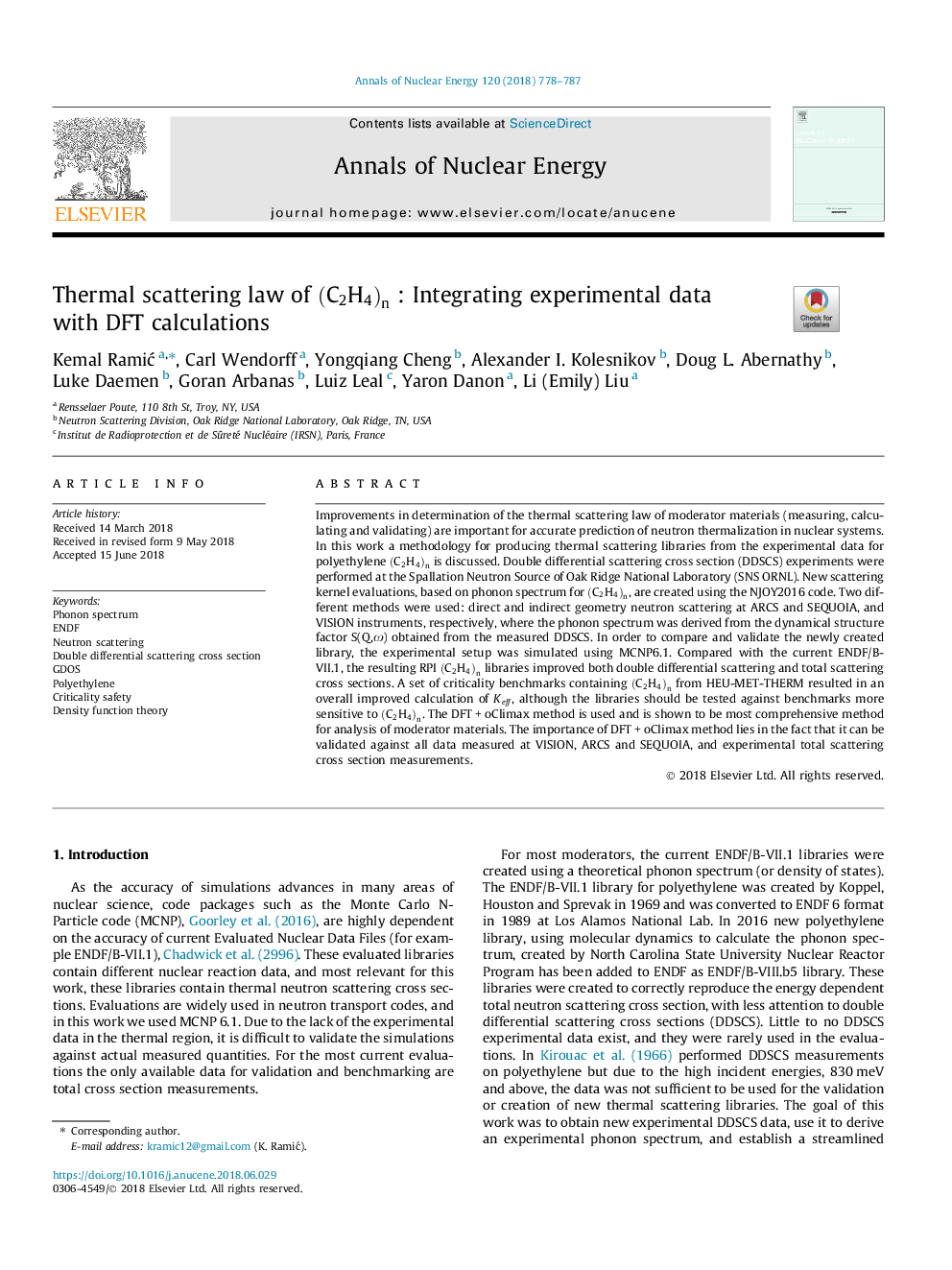| Article ID | Journal | Published Year | Pages | File Type |
|---|---|---|---|---|
| 8066887 | Annals of Nuclear Energy | 2018 | 10 Pages |
Abstract
Improvements in determination of the thermal scattering law of moderator materials (measuring, calculating and validating) are important for accurate prediction of neutron thermalization in nuclear systems. In this work a methodology for producing thermal scattering libraries from the experimental data for polyethylene C2H4n is discussed. Double differential scattering cross section (DDSCS) experiments were performed at the Spallation Neutron Source of Oak Ridge National Laboratory (SNS ORNL). New scattering kernel evaluations, based on phonon spectrum for C2H4n, are created using the NJOY2016 code. Two different methods were used: direct and indirect geometry neutron scattering at ARCS and SEQUOIA, and VISION instruments, respectively, where the phonon spectrum was derived from the dynamical structure factor S(Q,Ï) obtained from the measured DDSCS. In order to compare and validate the newly created library, the experimental setup was simulated using MCNP6.1. Compared with the current ENDF/B-VII.1, the resulting RPI C2H4n libraries improved both double differential scattering and total scattering cross sections. A set of criticality benchmarks containing C2H4n from HEU-MET-THERM resulted in an overall improved calculation of Keff, although the libraries should be tested against benchmarks more sensitive to C2H4n. The DFTâ¯+â¯oClimax method is used and is shown to be most comprehensive method for analysis of moderator materials. The importance of DFTâ¯+â¯oClimax method lies in the fact that it can be validated against all data measured at VISION, ARCS and SEQUOIA, and experimental total scattering cross section measurements.
Keywords
Related Topics
Physical Sciences and Engineering
Energy
Energy Engineering and Power Technology
Authors
Kemal RamiÄ, Carl Wendorff, Yongqiang Cheng, Alexander I. Kolesnikov, Doug L. Abernathy, Luke Daemen, Goran Arbanas, Luiz Leal, Yaron Danon, Li (Emily) Liu,
